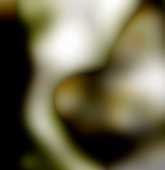


Italian version
 . dvd video
. dvd videoPhilip Glass / Steve Reich
Ars Electronica presents Images 4 Music
<dvd video> Ars Electronica Center Linz
ISBN 3775715967
Visualizing music seem to be one of the needs of the decade. Projecting spontaneous, derivative, algorithmic, abstract, poetic or simply arbitrary interpretations of music (performed or played) is involving musicians, visual artists and computer geeks on a global scale. But one of the most interesting aspects of this phenomenon is that very different background and cultures are mixed in a cooperative spirit, to achieve greater results, compared to a solo effort. This is the case of this Ars Electronica production. One of its instrinsic value is the interdisciplinary collaboration between the involved artists. Different and articulated interpretations of the minimal score that slowly de-synch (originally obtained with two analog tapes) are coordinated with the repetitive and variant loops that feature the Steve Reich and Philip Glass music. The indefinite flux of rounded and out of focus forms, algorithmically programmed by Casey Reas, the kinetic grey video, mirrored (doubled) in two channels, by Norbert Pfaffenbichler and Lotte Schreiber, or the multiple scenes of moving commuters, an orchestrated and balanced movements of bodies and urban architecture, by Dietmar Offenhuber and the concrete poetry obtained with the Poetry Loom and the liquid kaleidoscopic distortions by Martin Wattemberg are speaking the same abstract language of the collaborative piano duo (Maki Namekawa and Dennis Russell Davies). Altogether they definitevely break the border of the interpretation centered on the musical performer (focus of the scholar's attention). Now the focus is not anymore on the singular person and its virtuous skills, but much more on the relationship that he has with the team. This pondered production, that benefits of the studio technologies, is much better than the live performed in Linz in 2004, because of the care on the visual/music relationship with no technical mistakes. In this way the cooperation between artists reach an excellent level, showing off most of its potential and contributing to the construction of our contemporary hybrid audio / visual language.